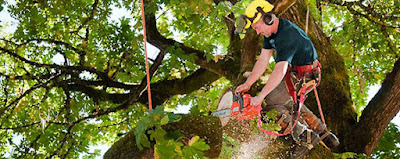Whats Signs Indicate If Your Tree Is Dying?
Greenery and trees in the yard of a home are a luxury as of today they bring you closer to the elements of nature. With its presence comes the responsibility of taking care of it. if you are new at it, do not get intimidated as there is arborist Melbourne in and around who would help you with their immense knowledge of trees.
One of the aspects of your tree car is to figure out whether the tree in your yard is dying. If yes, then you would require the tree removal Melbourne service. As keeping a dying tree in the yard would only invite more problems, some of it could be costly.
To eliminate such a possibility, it is better t know if your tree is dying early. Here is a list of some signs that would help you to figure it out.
Examine Leaves
Examining the leaves provides the best indication of whether or not your tree is dead or dying. Some trees take longer to leaf out than others, but if your tree doesn't produce a single leaf by August, there's a serious problem.
Look for tree buds to gauge a tree's health in the winter when there are no leaves. They appear as little spots along the ends of the branches and can be difficult to notice (think of a connect-the-dots puzzle). The tree could be dead if you don't notice those spots along the ends of the branches.
Presence of Bare Branches
A close look at the branches of the trees would allow you to know more about its condition. If they're unusually sparse at a season when they shouldn't be - like in the spring or summer – the tree is probably too far gone to save. Sometimes only half of a tree's branches are barren, while the other half is densely packed. This indicates that the tree is only infected on one side, which could lead the tree to become unbalanced and topple as a result of the weight. If the tree is deciduous, check to see if the leaves cling to the branches instead of falling off in the winter, as this is another clue the tree is dying.
Signs of Rot or Fungus
The presence of rot or tree fungus is always a bad sign. If you notice either of these, you must act quickly to rescue the tree. Unfortunately, if the damage is severe, the tree will be unable to be saved.
Some rot and fungal treatments exist, however they may not be worth trying if the tree is already dead. If the fungus threatens to spread, the tree will have to be cut down.
Damaged Roots
While inspecting the roots to see if they are harmed is difficult, there are some factors that can assist you in determining whether the roots are damaged. If a tree appears to be leaning to one side or the other, this is an early sign that its roots have been harmed. This could indicate that the tree's roots aren't strong enough to support it directly.
Epicormic shoots may appear at the base of the trunk if the roots are damaged or weak. These are sprouts that might appear and indicate that the tree is under a lot of stress underneath the ground. There are a number of additional natural and man-made variables that might have an impact on a tree's roots. Excavation projects, new structures, thin root systems, new exposure to harsh elements, and loosened soil compaction are just a few examples. Check to see if any of these are in the vicinity.




Comments
Post a Comment